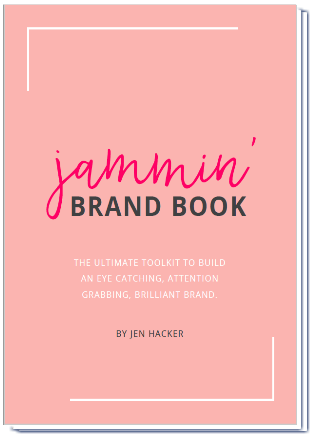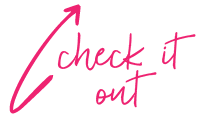.png)
4 Proven Strategies to Help You Build Brand Awareness
Let’s talk for a minute about what it means to build brand awareness.
40 million images are posted to Instagram each day and over 10,000 include the Starbucks logo.
The Starbucks brand also happens to be one of the most recognized in the world.
Coincidence? Probably not.
Take a look at this photo and tell me what stands out:
.jpg)
No matter where you encounter Starbucks, the experience is always the same. It doesn’t matter if you are in Australia or Austin, Texas. Buying coffee from a shop, a grocery store, or online. Drinking out of a paper cup or ceramic mug. In every situation, you will find the same, recognizable Starbucks. Same logo, same colors, same name.
When it comes to building brand awareness, consistency is everything.
Not only do consumers expect it:
They need it in order to build trust with your brand:
It takes an average of 5-7 brand impressions before someone will recognize your brand.
Over two thirds of millennials site brand recognition as the most important driver of brand loyalty.
The reason I raise this example is because far too often I see up-and-coming brands making the mistake of not delivering a consistent experience. And, they don’t see how much it is hurting their business.
I’ve talked a little about this before but, consistency will not only help grow your brand awareness but it will convert onlookers into customers.
Does it take more effort? Yes. Is it worth it? YES!
Which is why today, we’re going to talk about 4 strategies for delivering a consistent brand experience. It’s also why I created this free downloadable checklistof places you need to make sure are consistently branded.
Let’s get to it.
Strategy 1: Design an adaptable logo
You want to use your logo everywhere your brand shows up. But that doesn’t mean that every situation is going to be the same. Sometimes you’ll be presented with challenges like limited space or opposing background colors. For this reason, you want to have adaptations of your logo that can suit these different scenarios.
Let’s take a look at Dropbox:
.png)
Dropbox’s primary logo uses the brand name and mark in blue against a white backdrop. However, they allow for the colors to be reversed when the logo is placed on a darker background. They also have variations that can be used when space is tight.
With your brand logo, it’s advisable to follow Dropbox’s lead. Make sure you have versions that can work for all scenarios so that you don’t find yourself hacking together a solution on the fly.
Strategy 2: Snag your social handles
To the absolute best of your ability you want to have the same handle across all social media sites where your brand has a presence. To go a step further, ideally, that handle matches your brand name and your website URL exactly. If you can nail this, it will make it so much easier for your customers to find you and alleviate any confusion about whether or not it’s the *real you*.
See how Stitch Fix has done it:
Everywhere the brand shows up it goes by the Stitch Fix name. So no matter if you are searching on Google or on social media, the likelihood of finding them is high.
If you haven’t yet named your brand my recommendation is to search Google and all social media sites to see if any names you’re considering are open. Once you’ve decided, snag the handles so that you have them when you’re ready.
If you already have a brand name and the matching social media handle is available you have a couple of options. First, you can reach out to the person who has it. If they don’t use it much they might be willing to turn it over. Alternatively, you can choose a variation that closely resembles your brand name (for instance adding “the” to the beginning or a descriptor word to the end). Then use that handle across all social platforms.
Strategy 3: Write a snappy pitch
When someone searches for and ultimately finds your brand, they want verification that they’ve ended up in the right place. You can give them that assurance by writing a short introduction that explains who your brand is and what it does. Once you’ve written your line, use it wherever you have the opportunity to create a bio for your brand.
Lola does a great job of this:
.png)
See how they use the same line as the description that shows up in search as well as the line across all of their social media bios?
Strategy 4: Create a brand book
A brand book is a tool that documents the essential elements of your brand. It’s where you communicate your brand colors, fonts, and visual identity. It’s also a place you can note your brand tone of voice and personality.
Take a look at these pages from Barre & Soul’s brand book:
.png)
By documenting these choices you create a guide that everyone who touches your brand can work from. It will ensure that everyone from your team, to external hires, to partners knows how to bring your brand to life in a consistent manner.
In my opinion, it is very hard to grow and scale a brand without having created your brand book. If you need help getting started, I’d highly recommend checking out the Jammin’ Brand Book.
To Wrap it up…
We started this post by talking about Starbucks and the fact that Instagram has over 10,000 images with their logo. Now imagine if Starbucks had decided that delivering the same experience each and every time wasn’t such a big deal? What if their logo sometimes used a mermaid but other times a coffee cup? If they sometimes called themselves Starbucks and other times The Howard Schultz company?
Those 10,000 Instagram images wouldn’t be nearly as powerful. Starbucks would fail to deliver the consistent experience their customers expect. Even more so, they wouldn’t benefit from the repetition that earns customers’ trust.
Luckily for them, this isn’t the case. Actually, let’s take luck out of the mix. This isn’t about luck. It’s about putting in the work.
So yes, creating a consistent brand experience may take a bit more effort… a bit more due diligence… a bit more commitment … but it’s all worth it. And, dare I say, it’s the most important thing you can do to build brand awareness right now.
What part of growing your brand awareness is the most challenging for you? What questions haven’t I answered? Let me know!

.png)
.png)




























